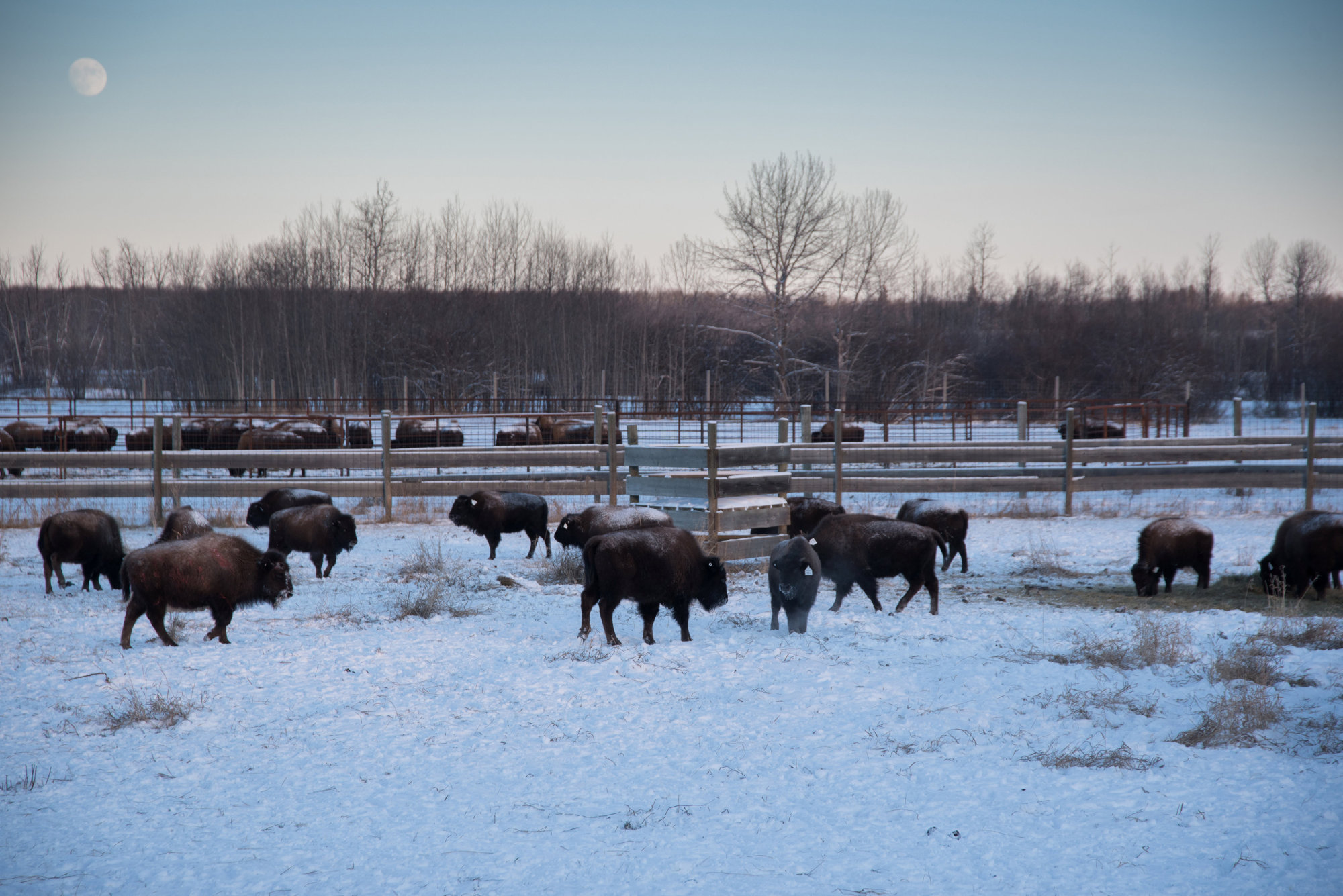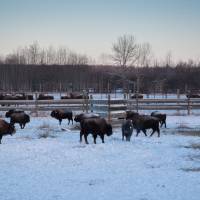Rangers have successfully reintroduced a herd of plains bison to Canada's oldest national park, officials said on Monday, more than 130 years after the iconic North American animal last grazed the eastern slopes of the Canadian Rockies.
Parks Canada moved 16 bison from a protected herd in central Alberta into an enclosed pasture in Banff National Park in the west of the province last week.
The herd will stay under observation in an enclosure in the remote Panther Valley until summer 2018, when the animals will be released into the full 1,189 sq. km (459 sq. miles) reintroduction zone in the park's eastern valleys.
Parks Canada said bison were once dominant grazers and a "keystone species," and bringing them back to Banff will restore their missing role in the ecosystem.
Bison also have great spiritual meaning for Canada's aboriginal groups, having once provided an important source of food, clothing and shelter.
The reintroduction coincides with the 150th anniversary of Canada's confederation.
"This is a historic moment and a perfect way to mark Canada's 150," Environment and Climate Change Minister Catherine McKenna said in a statement. "Not only are bison a keystone species and an icon of Canada's history, they are an integral part of the lives of indigenous peoples."
Vast bison herds up to 30 million animals strong once migrated freely across the plains of North America, including the montane and sub-alpine meadows where the front ranges of the Rocky Mountains meet western Canada's rolling prairies.
The animal was nearly hunted to extinction by humans, and rangers estimate bison have not grazed in the valleys of Banff National Park since before the park was established in 1885.



















With your current subscription plan you can comment on stories. However, before writing your first comment, please create a display name in the Profile section of your subscriber account page.